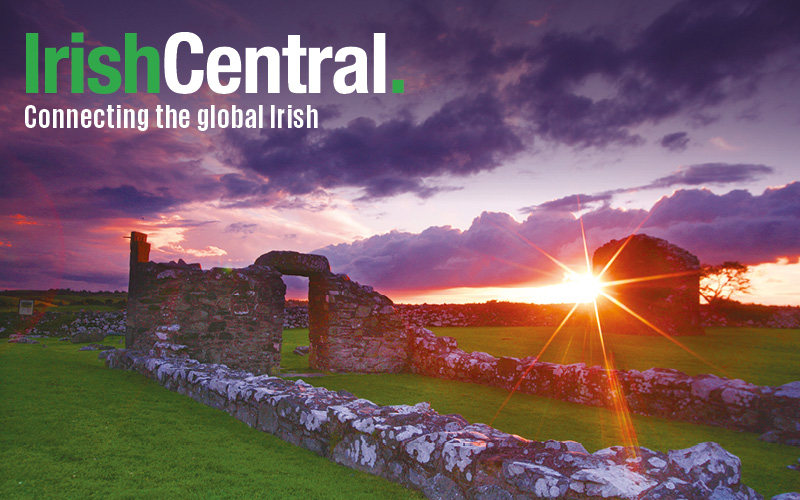The strange thing about the IRA ceasefire, twenty years on, is how much has changed but also how little. The long running conflict, for which Ireland was notorious throughout the world, is definitely over, and there are no more bombings, checkpoints and endless army surveillance - except, of course, for the tiny but deadly continuing menace of dissident Republicans.
But for the general and substantial peace, the population are very grateful, especially in the North, but also in the South where the conflict consumed so much energy and discussion.
However, it is also significant how little appears to have changed. Deep sectarian divisions remain between the two communities and may be even worse on the Unionist side, as an often indecisive DUP feels the need to compete and thus emulate the most extreme of disaffected Loyalist elements.
This sectarian antagonism had to go somewhere after the paramilitary violence ended, and it has gone into territorial dispute over the flying of flags and contentious parades.
But it was always going to be thus. Northern Ireland was a deeply divided society even before the Troubles and even during the relatively prosperous years of the early 1960s, when substantial State reforms could have prevented the coming conflict. And yet, at least now, these differences are being worked out at Stormont and in the councils, as opposed to on the street, or in shouting matches on TV (although we still have those, however)
It is really a case of whether the glass is ‘half full’ or ‘half empty’. From the half full perspective, who would have thought that Ian Paisley’s DUP would share power with Sinn Fein in a Northern Ireland Government, relatively solidly, despite all the controversies, and still holding firm.
And who have thought that the gun would disappear after decades of war and that the IRA would hold so impressively to their ceasefire, something for which they get little credit, incidentally. Serious loyalist violence has also disappeared, but paramilitaries still remain depressingly involved in crime and in controlling working-class Protestant areas: hence, the timidity of the DUP leadership.
But from the ‘glass half empty’ perspective, there is much that is wrong and disappointing. Indeed, 20 years on from the historic ceasefire, it seems that not enough solid foundations have been put down to prevent complete paralysis and even the slide back to conflict. The Sinn Fein leader Gerry Adams believes that the NI peace process is now under its greatest threat for over a decade and blames the crisis on a failure of leadership.
Disputes about the commemoration of the violent past and about flag flying and contentious parades may seem trivial to outsiders, but they go to the heart of the divisions in the community, and will continue to do so – just as they do in any ethnically divided area. These issues can be resolved, however, with imagination.
But, more seriously, there appears to be a serious lack of any empathy or dynamic on the Unionist side for the entire Stormont partnership to actually work or grow. A minimalist attitude is being taken, which is mistake, because it is actually the Unionists who are the big beneficiaries of the current peace – and of the original IRA ceasefire.
The situation is not helped by the withdrawn and passive attitude of the British and Irish Governments, where once they had been fully engaged. The Irish Government has been understandably so absorbed with its own economic problems that it has withdrawn from serious engagement from the North, and with keeping the pressure on for the broader Irish nationalist case.
This, incidentally, is one of the big disappointments of the peace process, the way it seems to have almost reinforced partition. With the end of the violence, the two parts of the island have sadly drifted apart, political and culturally, with a mentality down South that ‘the situation is all sorted so we can ignore it.’ This is the very opposite of what was supposed to happen, and makes a nonsense of all that 1994 talk about a big ‘peace dividend’ and a ‘new way forward for the whole of Ireland.’
Nor is the situation helped by a British Government attitude which is much more sceptical and even hostile to the process than previous UK governments, a factor which is not nearly highlighted enough by commentators. This is a serious misjudgement, by both Dublin and London, as the Northern Ireland process is a fragile pace which needs constant minding and support.
The Stormont coalition of SF and the DUP is a forced marriage and will not work unless there is constant pressure by the two governments acting as guarantors of the arrangement, especially if the marriage has gone cold. In many ways, the two Governments have left the scene too early and should have stayed more involved instead of thinking ‘let them sort it out in Stormont.’
Indeed, it is striking that a lot of the tricky work in terms of finding a final settlement is still being left to the Americans, 20 years after direct US involvement brought about the actual IRA ceasefire! This week, former Presidential candidate Gary Hart arrived in Belfast to boost the good work of US peace envoy Richard Haass in bring the two sides together. So it is almost like we are back where we started: with the US acting as an honest broker to two political communities still fighting over political rights and identity.
But it was never going to be easy. We have come a long way since 1994, but even longer since 1984. Progress has been grindingly slow but, with a few exceptions, the guns are silent, the bombs have stopped and so have those endless funerals. And for that, all of us, but most especially the people in Northern Ireland, can be very grateful. Winston Churchill is famous for his ‘dreary steeples’ quote about Northern Ireland, but in this case, his other maxim comes to mind: ‘better jaw-jaw than war-war.’
* Eamon Delaney is a Dublin-based journalist and former diplomat.




Comments